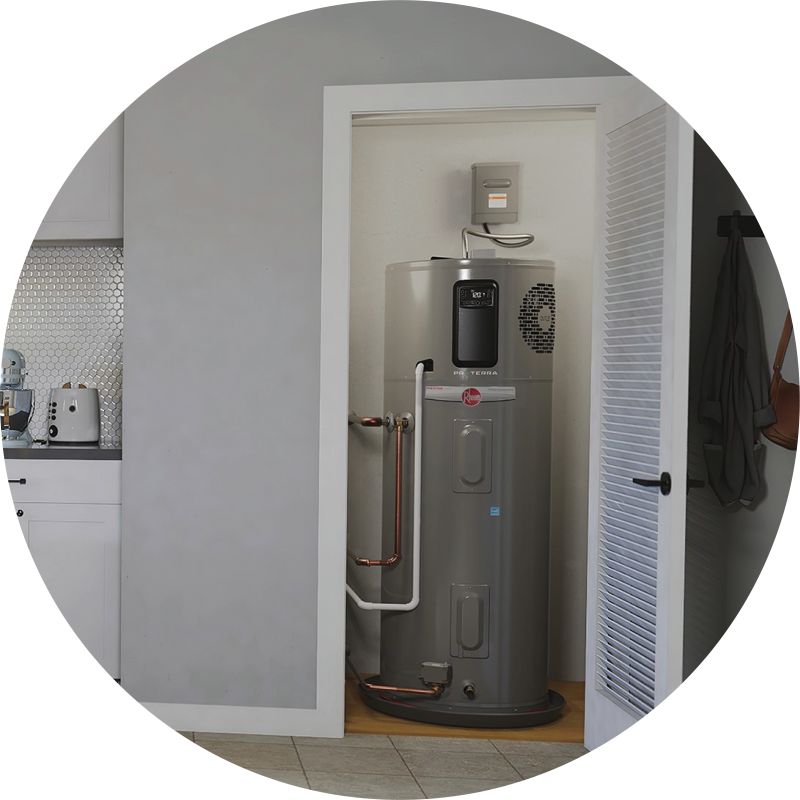Steps to Prolong the Life of Your Home's Hot Water System Through Maintenance
Steps to Prolong the Life of Your Home's Hot Water System Through Maintenance
Blog Article
We have stumbled on this article pertaining to How to Maintain a Hot Water Heater in a Few Simple Steps down the page on the web and think it made good sense to discuss it with you on this site.

Warm water is vital for everyday comfort, whether it's for a revitalizing shower or cleaning meals. To ensure your warm water system runs efficiently and lasts much longer, routine maintenance is vital. This write-up supplies practical suggestions and insights on just how to maintain your home's warm water system to prevent disturbances and costly repairs.
Intro
Preserving your home's hot water system might seem challenging, but with a couple of straightforward actions, you can guarantee it operates efficiently for several years ahead. This guide covers every little thing from understanding your warm water system to do it yourself upkeep suggestions and understanding when to call in specialist help.
Significance of Preserving Your Warm Water System
Routine maintenance not only extends the lifespan of your hot water system yet additionally ensures it runs successfully. Neglecting maintenance can bring about decreased performance, greater power costs, and even early failing of the system.
Signs Your Hot Water System Requirements Maintenance
Recognizing when your warm water system needs attention can protect against major problems. Keep an eye out for signs such as inconsistent water temperature level, weird noises from the heater, or corroded water.
Comprehending Your Hot Water System
Prior to diving into upkeep tasks, it's practical to understand the fundamental parts of your hot water system. Commonly, this consists of the hot water heater itself, pipes, anode rods, and temperature level controls.
Month-to-month Maintenance Tasks
Normal month-to-month checks can help capture minor issues prior to they escalate.
Flushing the Water Heater
Flushing your water heater removes sediment build-up, improving effectiveness and extending its life.
Monitoring and Replacing Anode Rods
Anode rods stop corrosion inside the storage tank. Evaluating and changing them when broken is crucial.
Inspecting and Adjusting Temperature Settings
Adjusting the temperature settings guarantees ideal performance and security.
DIY Tips for Maintenance
You can carry out a number of maintenance tasks yourself to maintain your warm water system in leading problem.
Looking for Leakages
On a regular basis examine pipes and connections for leaks, as these can lead to water damage and greater costs.
Testing Pressure Relief Valves
Evaluating the stress relief valve guarantees it operates appropriately and avoids excessive pressure build-up.
Shielding Pipelines
Protecting hot water pipes minimizes warm loss and can save power.
When to Call a Specialist
While do it yourself maintenance is useful, some issues require professional competence.
Complicated Issues Calling For Specialist Assistance
Instances include major leakages, electrical issues, or if your water heater is consistently underperforming.
Regular Specialist Upkeep Advantages
Professional upkeep can include thorough inspections, tune-ups, and making certain conformity with security standards.
Verdict
Routine maintenance of your home's warm water system is important for performance, long life, and expense savings. By complying with these tips and recognizing when to seek specialist assistance, you can make sure a trusted supply of hot water without unanticipated interruptions.
How to Maintain an Instant Hot Water Heater
Before tinkering with your hot water heater, make sure that it’s not powered on. You also have to turn off the main circuit breaker and shut off the main gas line to prevent accidents. Also turn off the water valves connected to your unit to prevent water from flowing into and out of the appliance. 2. When you’re done, you have to detach the purge valves’ caps. These look like the letter “T†and are situated on either side of the water valves. Doing so will release any pressure that has accumulated inside the valves while at the same time avoid hot water from shooting out and burning your skin. 3. When the purge valves’ caps are removed, you have to connect your hosing lines to the valves. Your unit should have come with three hoses but if it didn’t, you can purchase these things from any hardware or home repair shops. You can also get them from retail stores that sell water heating systems. Read the user’s manual and follow it to complete this task properly. When the hosing lines are connected, open the purge port’s valves. 4. You should never use harsh chemical cleaners or solutions when cleaning your unit. Make use of white vinegar instead. It should be undiluted and you’ll probably use about 2 gallons. 5. Now flush your water heater. This task should probably take about 40 minutes. We can’t give you specific directions for this because the procedure is carried out depending on the type, model and brand of your heater. With that being said, refer to the user’s manual. 6. When you’re done draining the unit, you have to turn off the purge port valves again. Remove the hosing lines that you earlier installed on each of the water valves. Put the valve caps (purge port) back in their respective places and be very careful so as not to damage the rubber discs that are found inside these caps. 7. Now that everything’s back in place, check your user’s manual again to find out how to reactivate your water heating system. 8. Once it is working, turn one of your hot water faucets on just to let air pass through the heater’s water supply pipes. Leave the tap on until water flows smoothly out of it. https://www.orrplumbing.com/blog/2014/september/how-to-maintain-an-instant-hot-water-heater/

I'm very drawn to Tips on Maintaining a Water Heater and I am praying you appreciated my entry. For those who appreciated our article please remember to share it. I value reading our article about Tips on Maintaining a Water Heater.
Check It Out Report this page